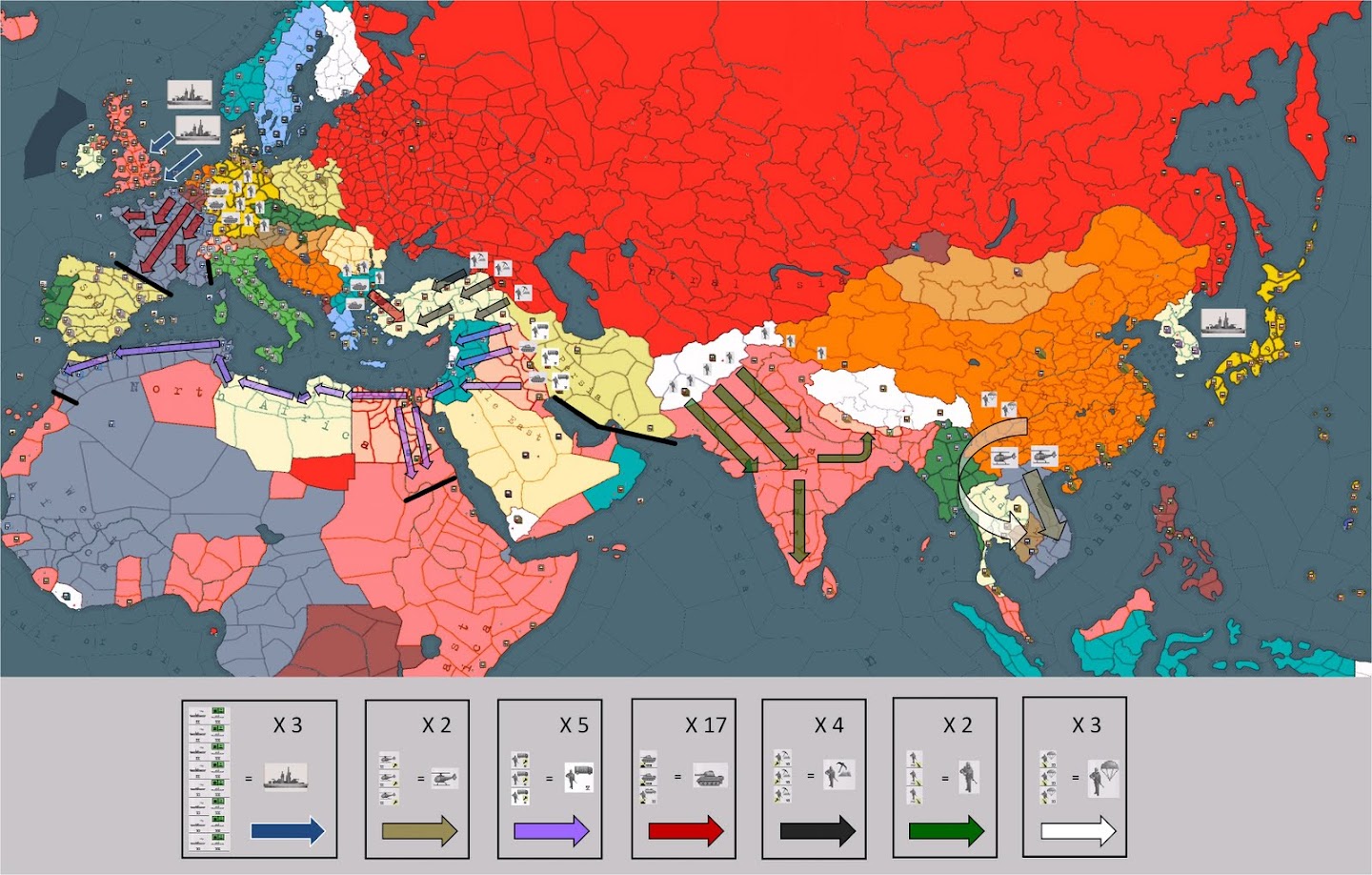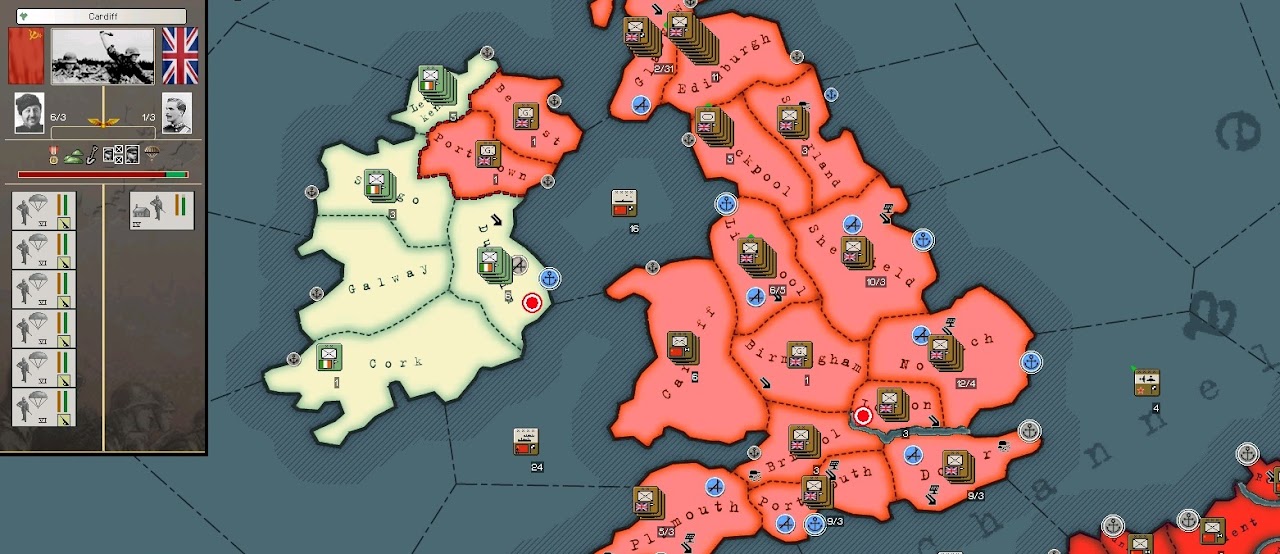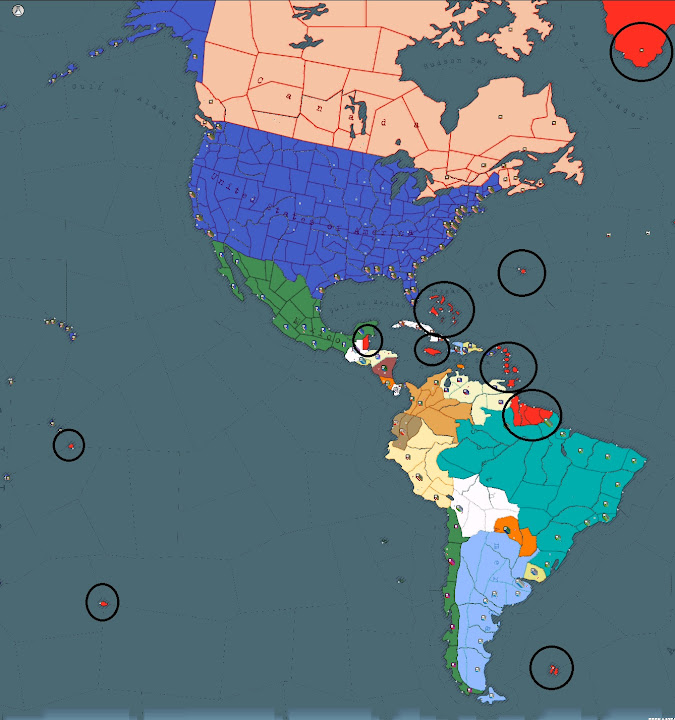Chapter 24: Operation Red Dawn
I know what you are waiting. Do you want it? Ask for it. Ask for it using a sexy voice. Sexier... Sexier... I SAID SEXIER! Ok, you can have it.
From the desk of the Chief of Staff to the Politburo - Subject: Operation Red Dawn
Attached documentation:

The plan
Dear Sirs,
As you already know, the best practices of the armed forces require the update of contingency plan each time a significant geopolitical change takes places anywhere on the world, specially where the Soviet Union and/or its allies have interests.
Therefore, after analyzing the impact that the independence of some of the former Western European colonies have had in our previous hypothetical conflicts plans, the high command from all the branches of the armed forces are pleased to report that the design of a new action plan, should operation Red Dawn ever take place, is complete.
Please note that the color coding of the arrows determine which type of army corps will lead the hypothetical offensives in each one of the active theatres.
The following is an overview of the tasks and objectives of the armed forces should the implementation of Red 1 be deemed necessary:
- The Baltic and Arctic fleets’ main target is to disable the Royal Navy’s Home Fleet. If the navy manages to achieve its objective, this should allow us to gain control over the North Sea and the English Channel, turning an invasion of the British Islands, feasible.
- Defensive perimeters have been established in the Pyrenees and in the Alps, where geographical conditions should allow our allies to stand their ground against eventual French counter offensives.
- All the beaches under the control of friendly governments are garrisoned with at least 4 divisions, provided by our allies. The Azores and Cape Verde, having completed the construction of level 5 coastal fortresses, are garrisoned by three Soviet divisions each as well as most Russian provinces. The safety of Japanese Micronesian islands has not been placed under the supervision of this department, falling under the responsibility of our eastern most allies.
- The air force has been tasked with the protection of our allies’ industrial centers, covering the skies over the north sea, the low countries, the French/German border and the Mediterranean. If we manage to attain air superiority, the air force will also focus on giving support to our ground and naval units in their respective missions. Bombing operations without air support would place a huge burden on our economy, as stated by the Ministry of Work and Production.
- The far eastern fleet will focus on the complete destruction of the ANZAC navies which should not represent any threat whatsoever to our main naval assets. Once this is achieved, green light will be given to the invasion of Australasia. Some members of the High Command, having worked as military attaches in Tokyo for several years, recommend a close look at Japanese intentions in the region.
The targets for the army are the following:
First Stage of the operation:
1. European theatre: Take over Belgium and France with the minimum possible loss of life.
2. Middle eastern front: Take over the Suez Canal, Turkey and all the previous Western protectorates.
3. Indian Front: Take over all the territory in enemy hands.
4. Indochina: Overun the unguarded enemy territory in less than a year. Due to the roughness of the terrain our new air cavalry divisions have been assigned to this theatre, as well as our paratrooper forces which are tasked with the immediate capture of Cambodia.
Second stage, a year after the beginning of the hostilities:
1. Begin the invasion of the British Islands, attain control of all of them and Iceland.
2. Take over north Africa until reaching Casablanca, from where the air force could easily interdict any bombing campaign into Soviet territory.
3. Take over Sri Lanka.
It has come to the attention of this department that the Interior Ministry and the Foreign Relations Ministry have recommended, should our military objectives be attained, the liberation of the Ottoman Empire, India, Indochina, Egypt and Libya. Considering the need to guarantee the survival of the aforementioned eventual strategic allies, we recommend leaving forces in their territories to protect landing sites and land borders with our enemies.
For any additional clarification please contact [...]
On mid September 1953, the month of the Revolution, a phone call was made from the Politburo’s central offices.

That’s sexy enough, keep on talking for a few more minutes.
Last edited:











